¿Qué diferencia a una batería marina del Grupo 27 de una batería marina del Grupo 31?
Al comprar una batería marina, encontrará dos opciones comunes: las baterías del Grupo 27 y las del Grupo 31. Ambas están diseñadas para alimentar embarcaciones, autocaravanas y otros vehículos marinos, pero ¿en qué se diferencian? En este artículo, profundizaremos en las características específicas de ambos tipos de baterías marinas, explicando sus diferencias y similitudes, y ayudándole a determinar cuál se adapta mejor a sus necesidades.
- Batería Marina Grupo 27 vs Grupo 31: Una breve descripción general
- Comprender las diferencias físicas entre el grupo 27 y el grupo 31
- Potencia y capacidad: ¿cómo se comparan?
- Tipos de batería: Arranque vs. Ciclo profundo
- Cómo elegir entre baterías marinas del grupo 27 y del grupo 31
- La importancia del mantenimiento regular
- Baterías del grupo 27 y del grupo 31 en aplicaciones del mundo real
- ¿Cuál es la mejor opción para usted?
Además, al igual que elegir la batería adecuada para su embarcación, seleccionar el cortasetos adecuado para su jardín es crucial para la eficiencia y el rendimiento. Exploremos cómo tomar decisiones informadas sobre su equipo puede mejorar su experiencia de navegación o jardinería.
Batería Marina Grupo 27 vs Grupo 31: Una breve descripción general
Antes de profundizar en los detalles, comprendamos qué son las baterías del Grupo 27 y del Grupo 31. Ambas pertenecen a un sistema de clasificación definido por el Consejo Internacional de Baterías (BCI) para ayudar a los consumidores a identificar y comparar baterías marinas. Los números (27 y 31) representan el tamaño físico y la capacidad de potencia de la batería, lo que, en última instancia, influye en su idoneidad para diferentes tipos de aplicaciones.
Batería de Marines del Grupo 27
Las baterías marinas del Grupo 27 se utilizan generalmente en embarcaciones pequeñas o vehículos recreativos donde se requiere una potencia moderada. Estas baterías suelen tener una capacidad de entre 70 y 110 amperios-hora, según el fabricante. Su tamaño compacto las hace versátiles, pero podrían no ser capaces de soportar los altos requisitos de potencia de embarcaciones o sistemas más grandes.
Batería de Marines del Grupo 31
Por otro lado, las baterías del Grupo 31 son más grandes y potentes. Su capacidad suele oscilar entre 100 y 150 amperios-hora. Esto las hace ideales para embarcaciones grandes, vehículos recreativos de alta resistencia y aplicaciones que requieren una mayor vida útil y mayor potencia. Las baterías del Grupo 31 suelen ser la opción preferida para aplicaciones de ciclo profundo debido a su capacidad de uso prolongado.
>>Vea también ¿Cuál es el CCA ideal para una batería de cortadora de césped?
Comprender las diferencias físicas entre el grupo 27 y el grupo 31
Una de las primeras cosas que notará al comparar las baterías del Grupo 27 y del Grupo 31 es su tamaño. Las baterías del Grupo 27 son más pequeñas, midiendo aproximadamente 30,5 cm de largo, 16,7 cm de ancho y 21,5 cm de alto. En cambio, las baterías del Grupo 31 son más grandes, midiendo típicamente alrededor de 33 cm de largo, 17,2 cm de ancho y 24,1 cm de alto.
Estas diferencias de tamaño afectan no solo la capacidad de cada batería, sino también su facilidad de instalación en diferentes compartimentos. Si está actualizando su batería o construyendo un nuevo sistema marino, conocer el tamaño y los requisitos de potencia es esencial para garantizar un ajuste perfecto.
Potencia y capacidad: cómo se comparan
Si bien las baterías del Grupo 27 y del Grupo 31 ofrecen fuentes de energía confiables para aplicaciones marinas, sus diferencias de capacidad son significativas. La batería del Grupo 31, de mayor capacidad, puede soportar cargas de energía más altas durante períodos más largos, lo que la hace más adecuada para embarcaciones con múltiples dispositivos que consumen mucha energía, como motores de pesca de arrastre, sondas de pesca o aires acondicionados.
Las baterías del Grupo 27, aunque siguen siendo potentes, son más adecuadas para embarcaciones más pequeñas o aplicaciones que no requieren un suministro de energía prolongado. Es importante evaluar las necesidades de energía de su embarcación antes de elegir entre una batería del Grupo 27 y una del Grupo 31.
Tipos de batería: de arranque vs. de ciclo profundo
Al elegir una batería para su embarcación o autocaravana, también debe decidir si necesita una batería de arranque o una de ciclo profundo. Una batería de arranque proporciona una rápida inyección de energía para arrancar un motor, mientras que una de ciclo profundo proporciona energía constante y sostenida durante un período prolongado.
- Batería de arranque (Grupo 27): Las baterías del grupo 27 se utilizan a menudo como baterías de arranque debido a su capacidad de proporcionar una gran sobrecarga de potencia en un corto período de tiempo.
- Batería de ciclo profundo (Grupo 31): Las baterías del Grupo 31 se utilizan con mayor frecuencia como baterías de ciclo profundo debido a su capacidad para soportar descargas y recargas prolongadas y profundas. Esto las hace ideales para embarcaciones de mayor tamaño o aplicaciones con demanda de energía constante.
Cómo elegir entre baterías marinas del grupo 27 y del grupo 31
Elegir la batería adecuada depende, en última instancia, de las necesidades energéticas de su embarcación o autocaravana. Aquí tiene algunas preguntas que debe hacerse:
¿Cuál es el tamaño de su embarcación o autocaravana? Las embarcaciones más grandes con varios sistemas eléctricos probablemente se beneficiarán de la capacidad de potencia adicional de una batería del Grupo 31.
¿Qué tipo de energía necesita? Si utiliza varios sistemas eléctricos simultáneamente, una batería del Grupo 31 le proporcionará la energía de mayor duración que necesita.
¿Cuánto espacio tienes? Las baterías del Grupo 27 son una buena opción si buscas una batería más compacta que quepa en espacios reducidos.
Recuerde que su elección de batería afecta no solo el rendimiento de su equipo, sino también su satisfacción a largo plazo con su experiencia en navegación o vehículo recreativo.
La importancia del mantenimiento regular
Las baterías del Grupo 27 y del Grupo 31 requieren un mantenimiento regular para garantizar un rendimiento óptimo y una larga vida útil. Esto incluye revisar el nivel de carga, inspeccionar los terminales para detectar corrosión y mantener la batería limpia. Ya sea que utilice su batería para aplicaciones marinas u otros fines, su cuidado garantiza que proporcione energía confiable cuando más la necesite.
Mantenimiento de la batería para una mayor longevidad
- Verifique la carga: Monitoree regularmente el nivel de carga de su batería. Usar un cargador inteligente evitará sobrecargas o subcargas, que pueden reducir su vida útil.
- Inspeccione los terminales: limpie cualquier corrosión de los terminales y aplique una capa protectora para evitar una mayor acumulación.
- Guarde la batería de forma adecuada: si no utiliza la batería durante la temporada baja, guárdela en un lugar fresco y seco para evitar daños.
Al mantener la batería bajo control y revisarla periódicamente, puede asegurarse de que dure muchos años de uso.
Baterías del grupo 27 y del grupo 31 en aplicaciones del mundo real
Para ayudarle a comprender las aplicaciones prácticas de estas baterías, exploremos algunos escenarios:
- Configuración para embarcaciones pequeñas (Grupo 27): Si utiliza una embarcación de pesca pequeña con un sistema electrónico mínimo, una batería del Grupo 27 debería ser suficiente para alimentar el motor y cualquier sistema auxiliar. También es ideal para autocaravanas o caravanas pequeñas que necesitan una fuente de energía fiable y económica.
- Configuración para Yates Grandes (Grupo 31): Para yates o embarcaciones grandes con múltiples dispositivos de alta potencia, una batería del Grupo 31 es la mejor opción. Gracias a su mayor capacidad de amperios-hora, puede satisfacer las necesidades de energía extendidas de embarcaciones grandes sin agotarse rápidamente.
>>Ver también ¿Es una batería de 4,0 Ah más potente que una de 2,0 Ah?
¿Cuál es la mejor opción para usted?
Para decidir qué batería es la adecuada para usted, considere sus necesidades específicas. ¿Busca una batería para alimentar equipos básicos en viajes cortos o necesita una que pueda soportar tareas exigentes durante períodos prolongados? Además, tenga en cuenta las limitaciones de espacio y el tamaño de los compartimentos de las baterías en su bote o autocaravana.
Si aún no está seguro de qué batería elegir, consultar con un profesional marino o un especialista en baterías puede ayudarle a tomar una decisión informada.
Al comparar las baterías marinas del Grupo 27 y del Grupo 31, es evidente que ambas ofrecen ventajas únicas según sus necesidades energéticas. Una batería del Grupo 27 es una excelente opción para instalaciones más pequeñas y sencillas, mientras que una batería del Grupo 31 ofrece mayor potencia y capacidad para sistemas más grandes y complejos. Independientemente de la batería que elija, el mantenimiento regular es fundamental para garantizar la máxima duración de su inversión.
Y al igual que elegir la batería adecuada, elegir las herramientas adecuadas para su jardín, como un cortasetos, puede marcar la diferencia en el rendimiento. Ya sea que se dedique a la navegación o a la jardinería, elegir el equipo adecuado es esencial para la eficiencia y la satisfacción. Tanto en la navegación como en la jardinería, elegir herramientas de calidad hará que su experiencia sea más fluida, agradable y productiva.

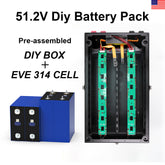

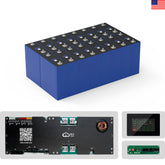

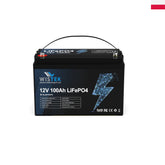
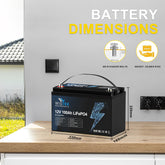
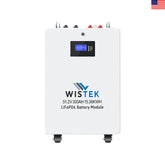
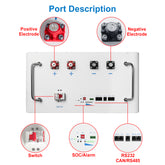
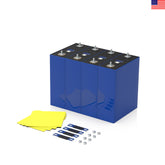
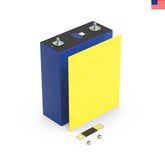
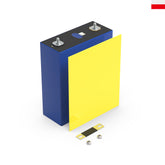

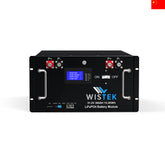
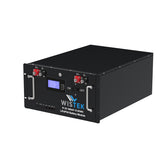
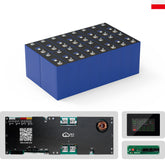








Leave a comment
All blog comments are checked prior to publishing